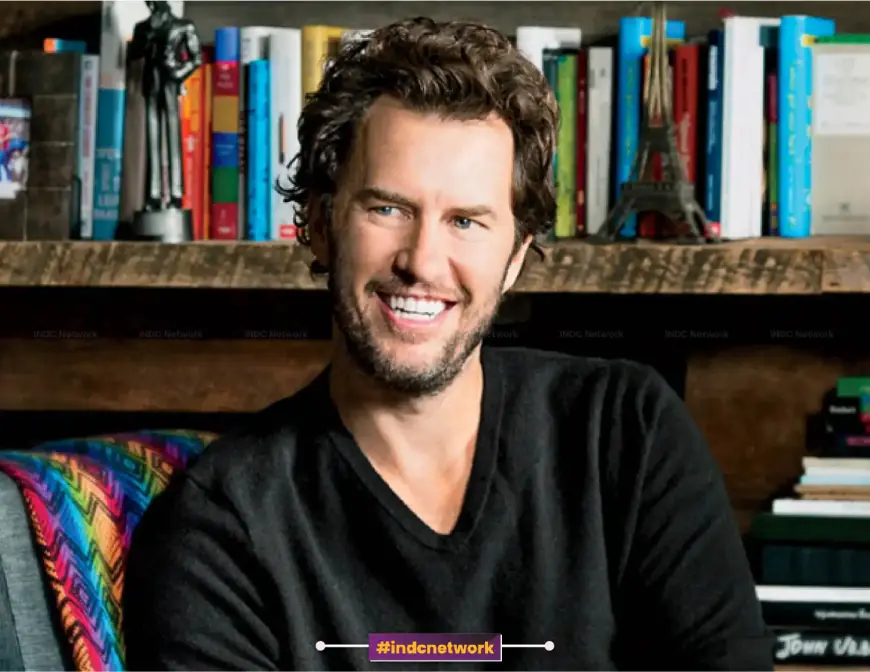Blake Mycoskie’s Journey to Building TOMS Shoes: The Revolutionary Business That Changed Social Entrepreneurship Forever
Blake Mycoskie, the visionary behind TOMS Shoes, turned a simple idea into a global social enterprise. With the “One for One” model, Mycoskie not only disrupted the fashion industry but also pioneered a new way of integrating social good into business. This article dives deep into his entrepreneurial journey, the success of TOMS, and how he revolutionized the social impact space through his innovative approach.

INDC Network : Biography : Introduction: The Rise of Blake Mycoskie and TOMS Shoes
In 2006, Blake Mycoskie founded TOMS Shoes, a company that would go on to become one of the most recognizable names in both the footwear industry and the social entrepreneurship movement. Mycoskie’s revolutionary concept—the One for One model—was simple yet profoundly impactful: for every pair of shoes purchased, TOMS would donate a pair to a child in need. This approach not only redefined corporate philanthropy but also catalyzed a wave of conscious consumerism.
This article explores the journey of Blake Mycoskie and TOMS Shoes, from its humble beginnings to its transformation into a globally recognized brand that integrated social responsibility into every aspect of its operations.
Blake Mycoskie: The Visionary Entrepreneur
Blake Mycoskie was born on August 26, 1976, in Arlington, Texas, with a natural inclination for entrepreneurship. Mycoskie’s early life was filled with business ventures, from selling cotton candy at football games to operating a laundromat during college. However, it wasn’t until he visited Argentina in 2006 that he conceived the idea that would change his life—and the lives of millions of others.
During his trip to Argentina, Mycoskie witnessed the poverty and hardship experienced by children in rural areas. Many of these children lacked basic essentials, including footwear, which left them vulnerable to infections, injuries, and other health issues. Inspired by the alpargata—a traditional Argentinian shoe—he conceived the idea of creating a business model that would provide shoes to children in need while simultaneously meeting the demands of customers in the marketplace.
The Birth of TOMS Shoes
Upon returning to the United States, Mycoskie began developing the TOMS business concept. He was determined to create a company that was not just profitable, but one that could make a real difference in the world. He borrowed money from his friends and family to produce the first batch of TOMS shoes.
The name “TOMS” is derived from “Shoes for Tomorrow”, symbolizing the company’s mission to make a difference for future generations. In 2006, the company launched with its signature style—the Alpargata—and quickly gained traction. The brand’s commitment to the One for One model, in which every purchase resulted in a pair of shoes being donated, was a radical departure from traditional business practices.
TOMS' early success can be attributed to a few factors:
- The Unique Business Model: TOMS was one of the first brands to link its product sales directly to social impact, offering customers the chance to “buy a pair, give a pair.”
- Strong Brand Values: The company’s focus on social good resonated with consumers who were increasingly seeking brands that aligned with their personal values.
- Effective Marketing: TOMS leveraged the power of social media and grassroots marketing to spread its message. Word-of-mouth and community involvement played a pivotal role in building the brand.
The "One for One" Model: A New Era of Conscious Consumerism
The “One for One” model was not only the foundation of TOMS Shoes but also a groundbreaking idea that would inspire countless other businesses to follow suit. By tying product purchases to charitable contributions, Mycoskie demonstrated that businesses could achieve financial success while simultaneously addressing pressing social issues.
TOMS’ success was not just in selling shoes; it was about creating a movement—a movement in which customers could actively participate in social good by making conscious purchasing decisions. This model caught the attention of not only the fashion industry but also the broader business world, showing that profit and purpose could coexist.
In addition to providing shoes to children in need, TOMS later expanded its mission. They introduced new products and models such as:
- Eyewear: For every pair of sunglasses sold, TOMS would help restore sight to individuals in need.
- Coffee: For every bag of coffee sold, TOMS would provide clean water to communities in developing nations.
- Bags: TOMS introduced a line of bags to support maternal health programs and provide resources to women in need.
Through these initiatives, TOMS demonstrated that businesses could have a multi-faceted approach to addressing global issues.
Challenges and Growth: Scaling the Business
While TOMS’ success was rapid, it was not without its challenges. Early on, the company faced difficulties in scaling its operations. As demand grew, so did the complexity of fulfilling orders and managing donations. Additionally, there were concerns about the sustainability of the One for One model, particularly as the company expanded its product lines.
Mycoskie was also challenged with ensuring that the donations were having a lasting impact. While giving away shoes was a noble cause, it raised questions about the long-term effect on local economies and markets. Some critics argued that it could create dependency rather than sustainable change.
To address these issues, TOMS refined its giving strategy. It began partnering with local organizations to ensure that shoes were distributed in a way that benefited local communities. For example, instead of merely providing shoes, TOMS focused on community development, including health education and employment initiatives.
The Legacy of TOMS and Blake Mycoskie’s Impact
Blake Mycoskie’s leadership and innovation in creating TOMS Shoes reshaped the landscape of corporate social responsibility (CSR). TOMS’ success demonstrated that social enterprises could be both profitable and impactful, leading the way for other companies to adopt similar models. His work has had a far-reaching impact on the way businesses approach social and environmental issues.
Blake Mycoskie didn’t stop with TOMS; he has continued to be an advocate for social entrepreneurship and corporate philanthropy. He has written a book, Start Something That Matters, in which he shares his entrepreneurial journey and encourages others to create businesses with a social mission.
Today, TOMS continues to be a leader in the world of social enterprise. The company’s commitment to giving back remains at the core of its operations, and its influence has extended to other companies and industries. Mycoskie’s vision for TOMS was not just to sell shoes, but to create a platform for change, demonstrating that business can—and should—be a force for good.
Blake Mycoskie’s Lasting Influence on Social Enterprises
Blake Mycoskie’s TOMS Shoes is more than just a business—it is a movement that has changed the way we think about business, charity, and consumerism. By tying product sales to tangible social impact, Mycoskie proved that businesses can be both financially successful and socially responsible. The One for One model became a blueprint for other social enterprises and continues to influence companies today.
TOMS is a shining example of how businesses can address social challenges while creating a profitable enterprise. It shows that success is not solely measured in dollars but also in the impact a company has on the world. Blake Mycoskie’s legacy will undoubtedly continue to inspire entrepreneurs for years to come.
What's Your Reaction?














































































































































































